“Height, Light and Exposed Structure”–Places That Display and Celebrate Learning
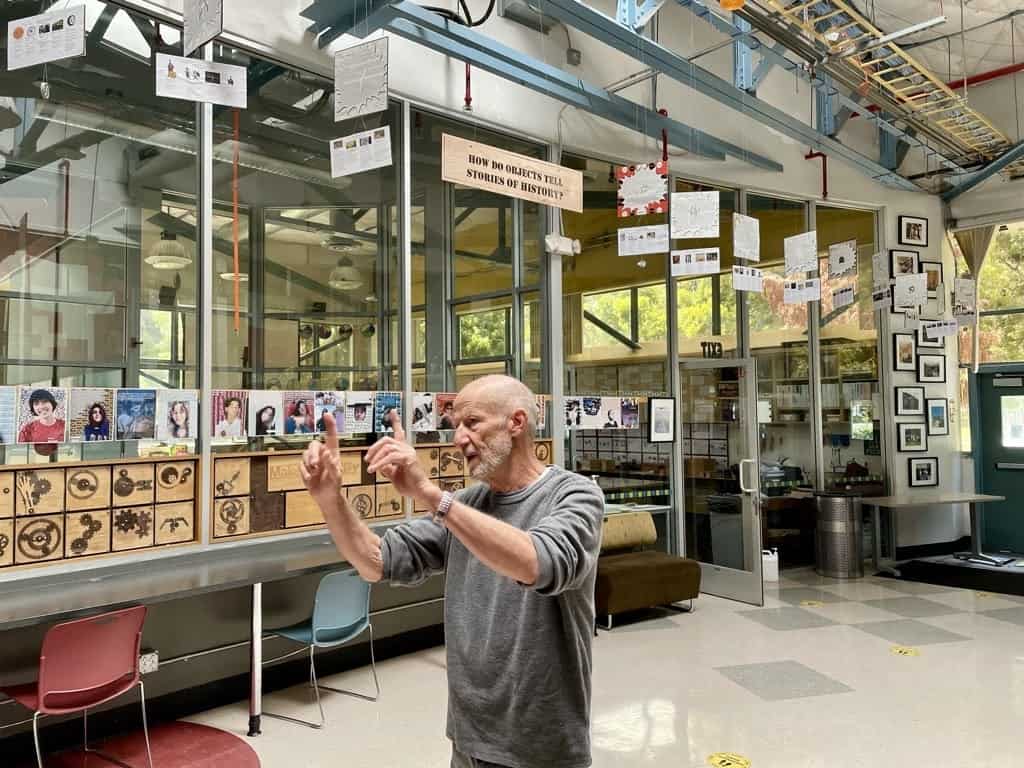
As our learning systems come together to welcome back students, we are reminded of those learning environments that pulse with the creative energy of learning. Learning spaces like High Tech High display art so that it shouts from wall to wall, reverberating through spaces of learning and care. Here, learning is a celebration.
Founder of the High Tech High network Larry Rosenstock (featured image) visited the abandoned Naval Training Center San Diego in 1999 where he found old warehouses with high ceilings. After gaining access to one and then five old buildings, Rosenstock oversaw the remodel retaining the “Height, light, and exposed structure” of the warehouses creating spaces that promote, display and celebrate learning. These extraordinary learning spaces sparked the development of Liberty Station, the most successful school-initiated urban redevelopment project in the country.
The thoughtful curation of art from elementary to high school is a testament to what students can achieve. Together, it weaves a poem of each individual learner’s story — a triumph of passions, struggles, and breakthroughs.
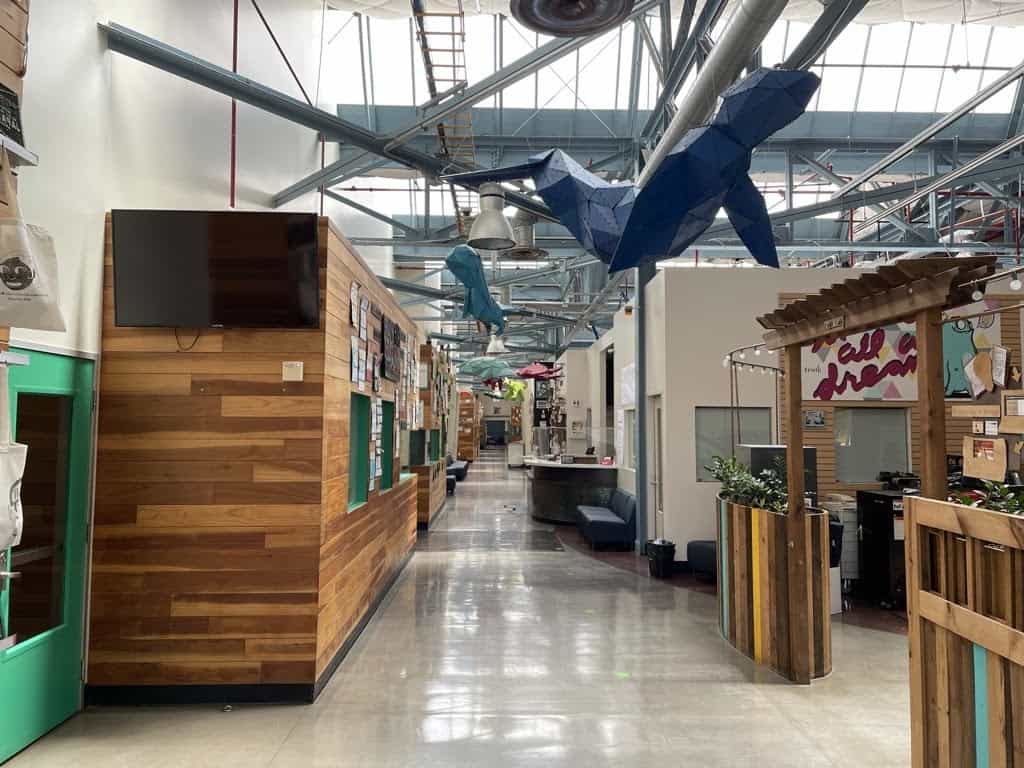 Littered with Examples of Learning
Littered with Examples of Learning
This transformation of shared spaces invites us all inside the modern version of the trophy case and makes for an inclusive art fair of wonder. These objects also capture the history of learning from the eyes of learners. Mike McGalliard, Executive Director of YELLOW, reflected after visiting High Tech High that it was “beautifully littered with examples of learning.” Curating this type of learning display requires care.
Thoughtfully displayed artifacts make an impact. Systems that practice displaying student learning fulfill students’ innermost desire: being heard. By creating a space that embraces student work, learners feel more than welcome, they feel a sense of belonging and pride for what they have created.
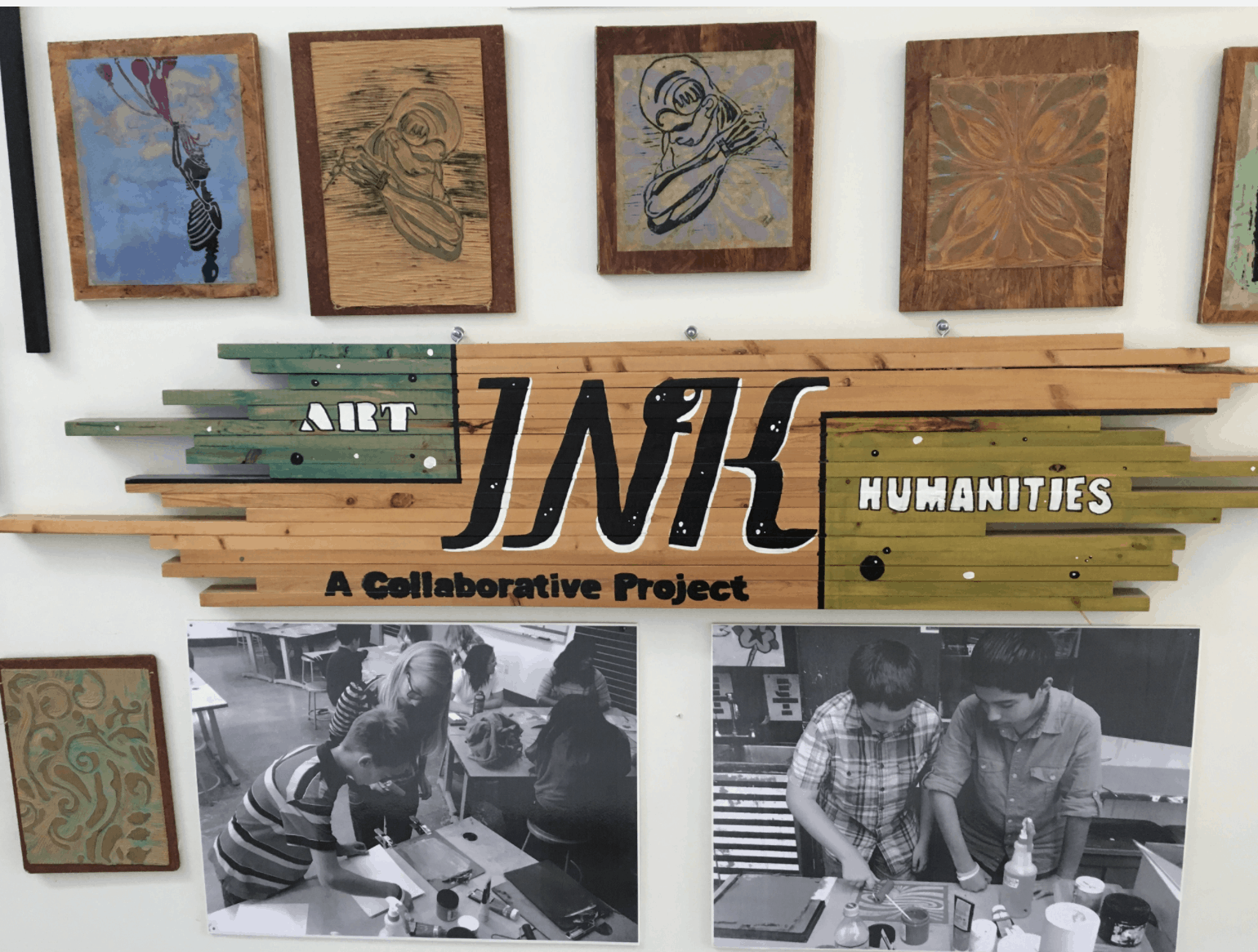 We recommend erring on the side of too many examples of learning. Bringing your space alive with demonstrations of learning shows that a learner voice is not only important to you and/your organization, but essential.
We recommend erring on the side of too many examples of learning. Bringing your space alive with demonstrations of learning shows that a learner voice is not only important to you and/your organization, but essential.
The Intentionality of What We Display and How
With a shift to online learning, we have two huge opportunities: infinite digital wall space and the chance to reimagine what belongs on the walls in our school. Many of the prior “wall-bound” resources can now live online and provide the necessary support, opening space for expression, personality, and perspective.
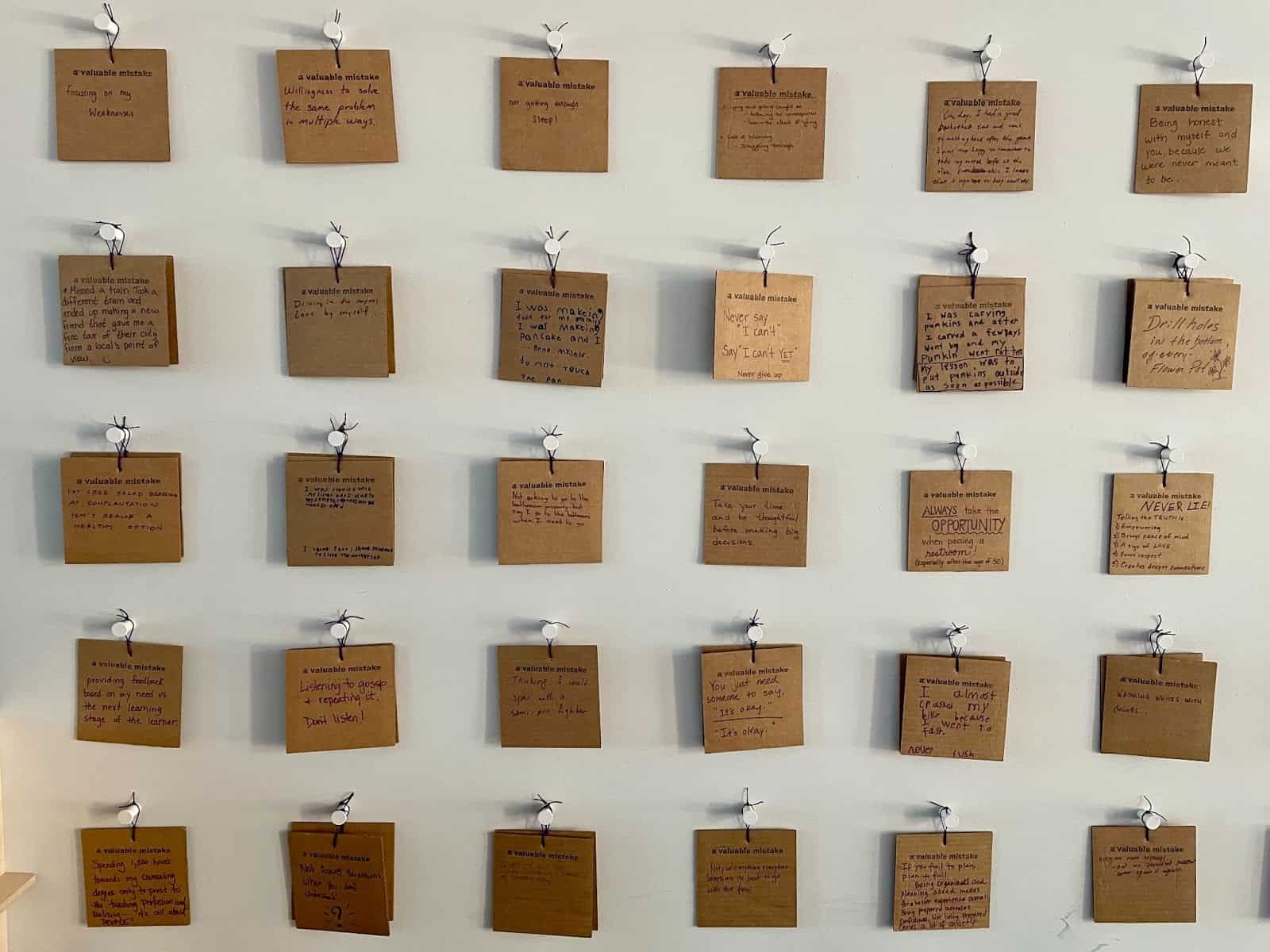
What we choose to post or display and in what fashion should be purposeful. Schools should think of themselves as curators of student perspective.
At Design 39, the learning outcomes are displayed on butcher paper to further emphasize the iterative nature and co-authoring implications. At the entrance, a handmade sign invites learners to share their ‘valuable mistakes’ and to honor that experience. The display is low tech, has high visibility, and is interactive and thoughtfully designed. Celebrating wins and learnings helps students and teachers know they belong. Instead of running out of school, students run into school to try, make mistakes and try again.
Learning is shared at Design 39 through impromptu demonstrations to visitors (like the robotics exhibition for #KCGreatSchools below) as well as scheduled presentations of learning for parents and community members.
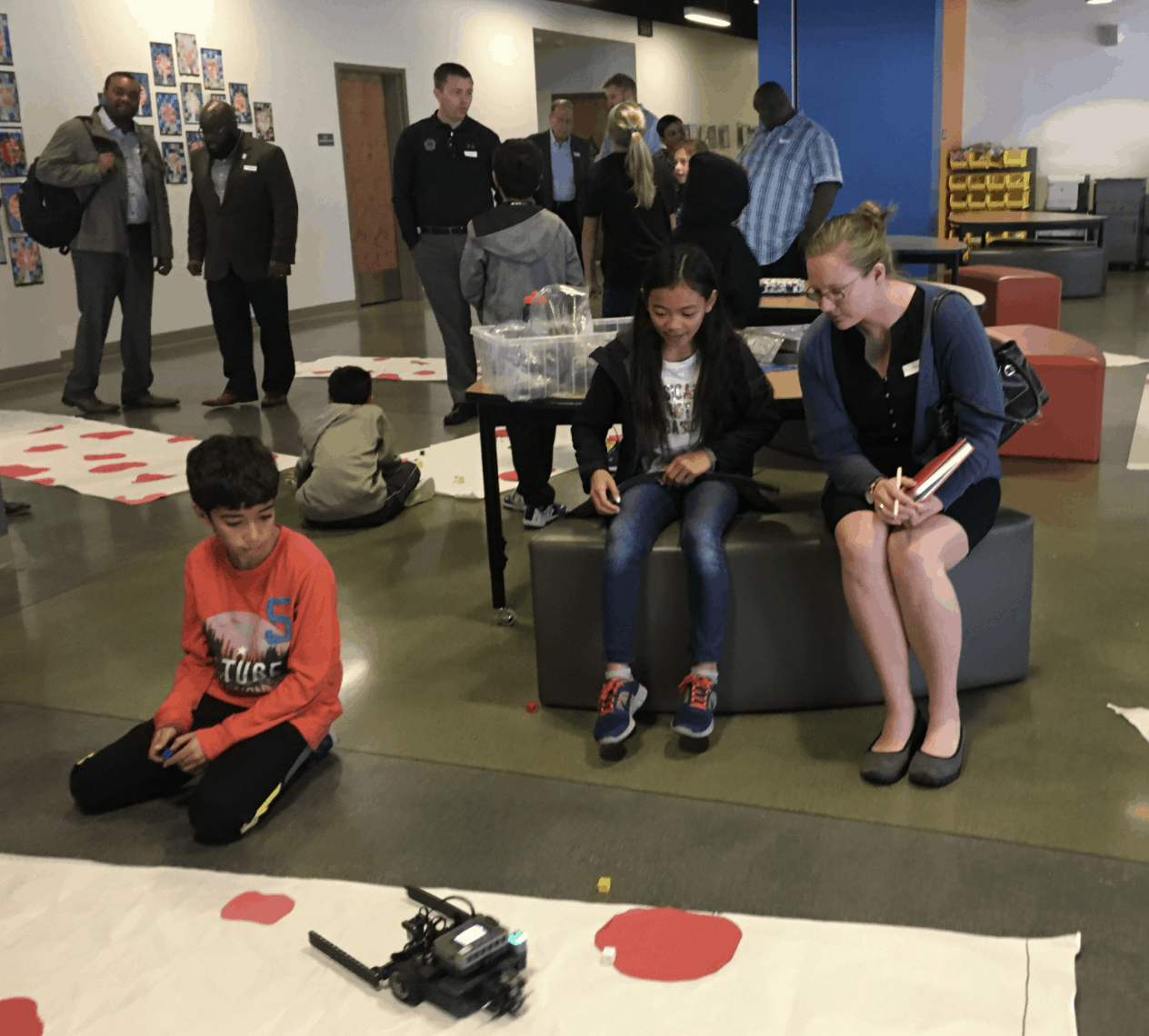 In Lindsay Unified School District, even with a strong personalized digital learning platform, elementary learners share their learning challenges and successes visually around their classroom. They gladly point to examples–writing, pictures, data charts.(below)– with visitors and family members sharing that this is part of their learning journey. When creating and presenting is a norm, it proves to students that learning is a process, and they should celebrate growth and overcoming challenges.
In Lindsay Unified School District, even with a strong personalized digital learning platform, elementary learners share their learning challenges and successes visually around their classroom. They gladly point to examples–writing, pictures, data charts.(below)– with visitors and family members sharing that this is part of their learning journey. When creating and presenting is a norm, it proves to students that learning is a process, and they should celebrate growth and overcoming challenges.
Personalizing the Learning
The personalized learning and student-centered movements have long been a champion of learner-friendly outcomes and visible expectations. These outcomes are even stronger when co-designed and revisited in form and function.
Agency happens when learners have not only been invited to the table to advocate for their learning but when they have designed the discussion themselves. Ownership and empowerment show up in how students approach learning, how they share about growth, and how they embrace their journey.
If we want learners to be designers, makers, and drivers of their learning, we need to enable meaningful learning structures to make that happen. The path to make this a reality is providing access and transparency at every phase, honoring the learning growth along the way, and finding multiple ways to celebrate, showcase and embrace the joy of learning.
For more, see:
- Eight Ways New Schools Innovate
- How Systems And States Can Encourage More And Better Project-Based Learning
Stay in-the-know with innovations in learning by signing up for the weekly Smart Update. This post includes mentions of a Getting Smart partner. For a full list of partners, affiliate organizations and all other disclosures, please see our Partner page.

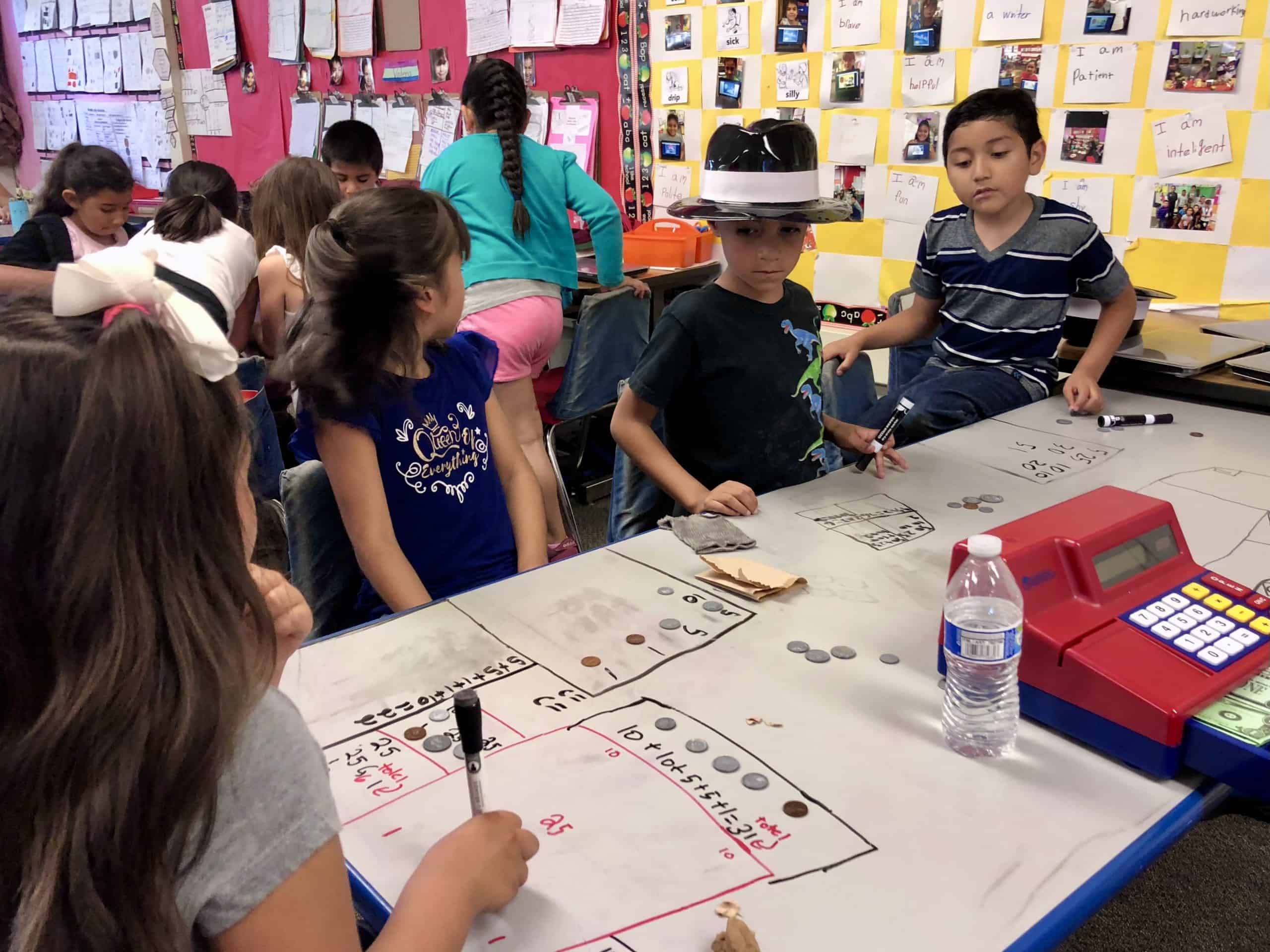
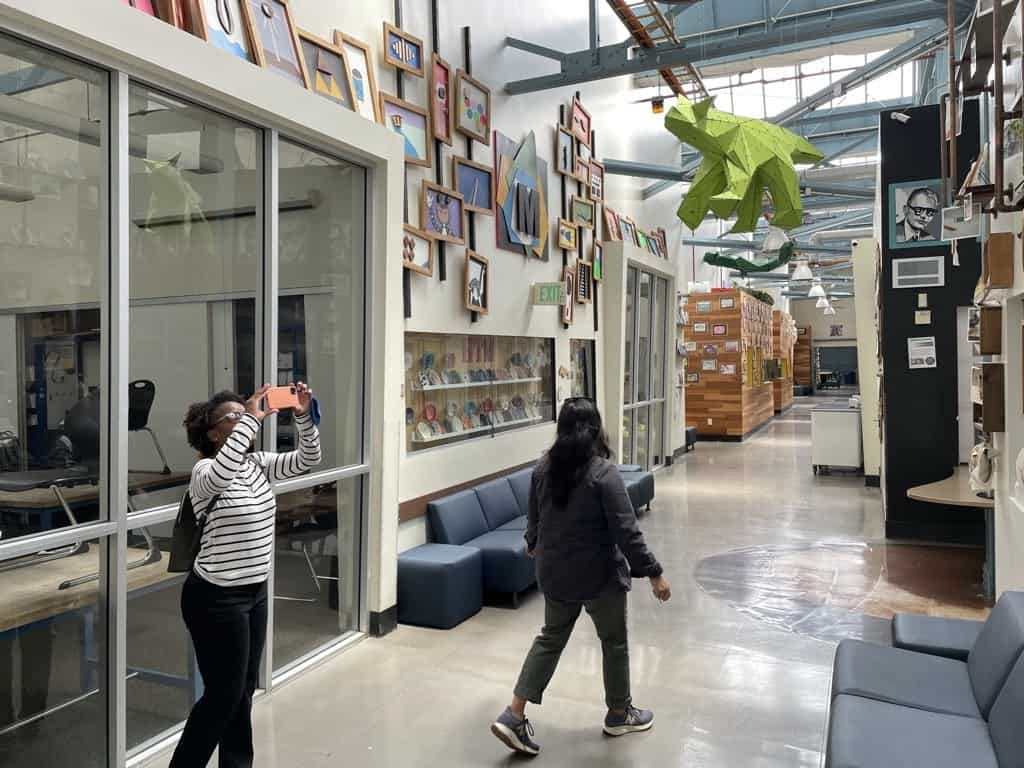


0 Comments
Leave a Comment
Your email address will not be published. All fields are required.